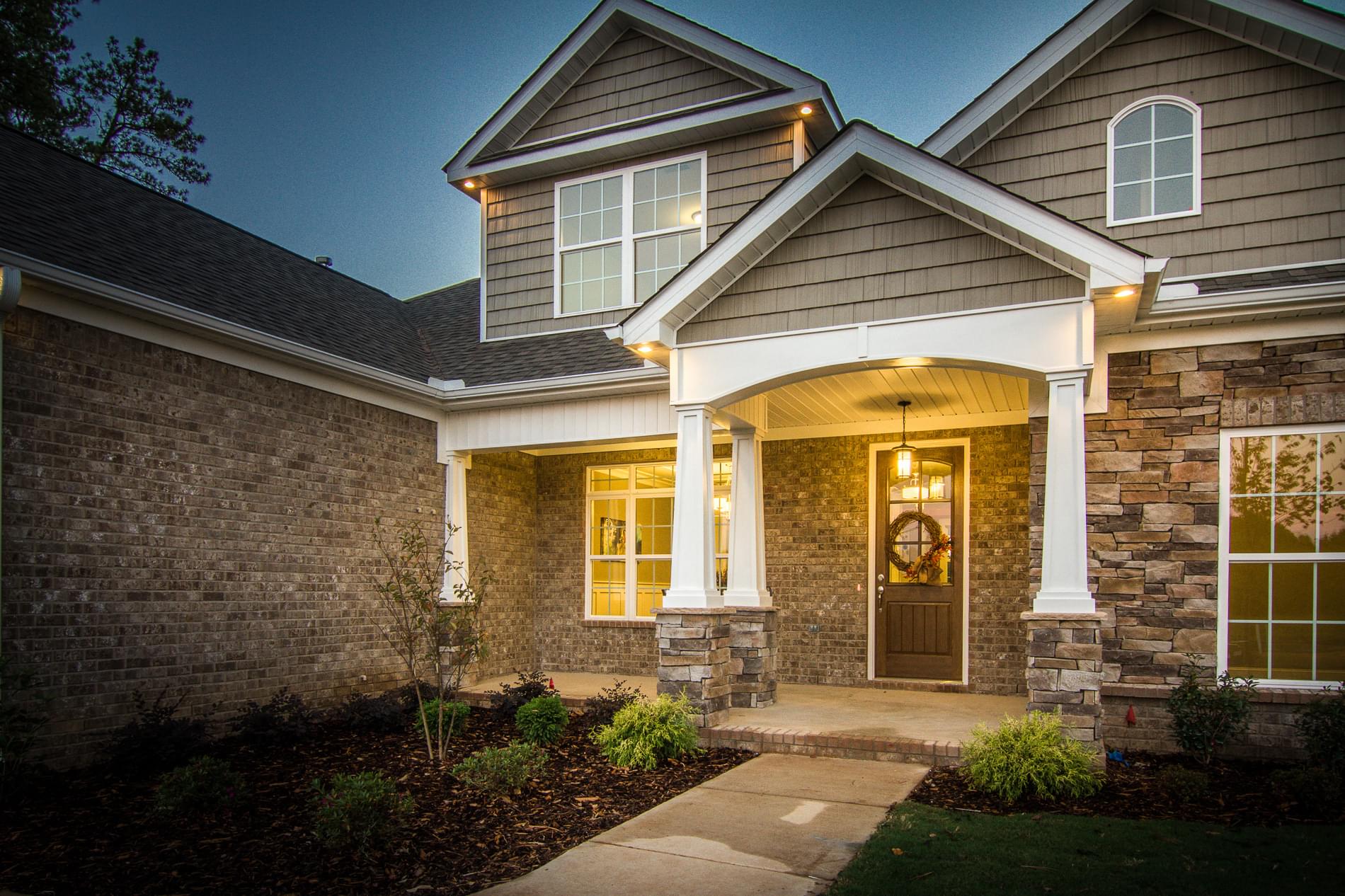Here at Murphy Homes we are proud to include bermuda sod on most of the homes we build. Bermuda sod is the most durable, lowest maintenance, lawn grass for the south east. If you are going for “Yard of the Year” a little effort and education can go a long way. If you just want a yard that won’t embarrass you at the neighborhood cookout, a little water and twice monthly mow will check that box! That being said, the first year can be a trying time for a new sod yard.
The purpose of this blog post is to teach you a bit about the process of installing a new yard so that you can have the yard that fits your life style.
Step 1: Grading
When grading a new home yard, we are looking for 3 Goals: 1) Make the yard drain so there is no standing water 48 hours after a rain. 2) Compact the soil enough to keep excessive wash outs and rutting from taking place 3) Leave the soil un-compacted enough to allow the roots from your sod to work their way into the soil.
As you can see, we have to walk a tightrope between goal #2 and #3. We feel we do a good job of this but we are not perfect and mother nature plays a big role. Some ruts from loose compaction and poor growth areas from over compaction are very common issues in new yards. The good news is that by using a little nitrogen based fertilizer and giving your roots time to work their way into the ground, these issues will work their way out.
Pro Tip: Spreading a little sand in uneven areas will allow your bermuda to creep throught the sand and even out your yard. We recommend doing this just before the growing season kicks in, Late April/Early May.
Step 2: Cutting Sod
Sod is grown on sod farms around the area of our neighborhoods. If you pay attention, you may notice sod farms while driving in rural areas. These farms typically start a sod field by plugging or seeding the area with bermuda. Since bermuda is a creeping grass the plugs will creep together creating an even field of bermuda grass. Once the field is ready to harvest, a machine cuts the top layer of topsoil off which will include the grass leaves, the rhizomes the bermuda grows from, and some roots.
This is a traumatic process for the bermuda. After all, how many plants can you think of that survive after you cut most of the roots off? Luckily, most of the growth energy in bermuda grass is stored in the rhizomes which are extremely hardy. This is why bermuda can survive in its dormant state in winter, during droughts, and during the sod installation process.
Pro Tip: As your new yard starts to grow, please remember the traumatic injury it went through being harvested. As with any injury, a little care and patience are needed.
Step 3: Installation and Initial Care
Once your sod is cut into roles by the sod farm, it is delivered to our neighborhoods and installed. The installation process is simply unrolling the sod on the graded dirt. Once the sod is laid, we do a few passes with a roller to smooth out any unevenness. We have to be careful with this step to prevent any more injury to the sod.
Sod installation machine
Once the sod is in place, it is time to water it to promote root regrowth. This is especially important during summer months. The first 1-3 weeks take a significant amount of water. It is not uncommon for sod to go into dormancy or shock even with heavy watering during this period. Don’t worry! This is perfectly normal. Even if the leaves turn brown, the rhizomes are often just entering a dormant stage and will start new sprouts given adequate care and patience.
Typical patchiness observed in first year sodded lawns.
Pro Tip: Given the amount of injury your sod endures during the harvesting, transportation, and installation process, you should not expect to enjoy an award winning lawn the first growing season.
Step 4: Long Term Enjoyment
The great thing about bermuda sod is that, despite all the difficultes it goes through being installed, the success rate is very nearly 100%. Once your sod begins rooting, we recommend watering regularly the first growing season. 10-15/day 3 days/week is usually more than enough to establish the sod.
The second growing season is when your yard really gets established. This is the year to really dive in and go for the picture perfect lush lawn of your dreams, or sit back and enjoy the extremely low maintenance this type of yard requires.
Second season sodded yard with minimal care.
Pro Tip: At the bare minimum, we recommend a yearly pre-emergent treatment of a broadleaf weed killer and fertilizer from a professional lawn services company.
Conclusion
A bermuda sodded yard is a great choice for building in our area. These yards are attractive, super low maintenance, and durable. The first year of growth can often, but not always, exhibit patchy growth, dormant areas, and some uneven erosion. The good news is that most of these problems get solved with a little patience. Let nature do its thing and you can look forward to years of low maintenance enjoyment!


